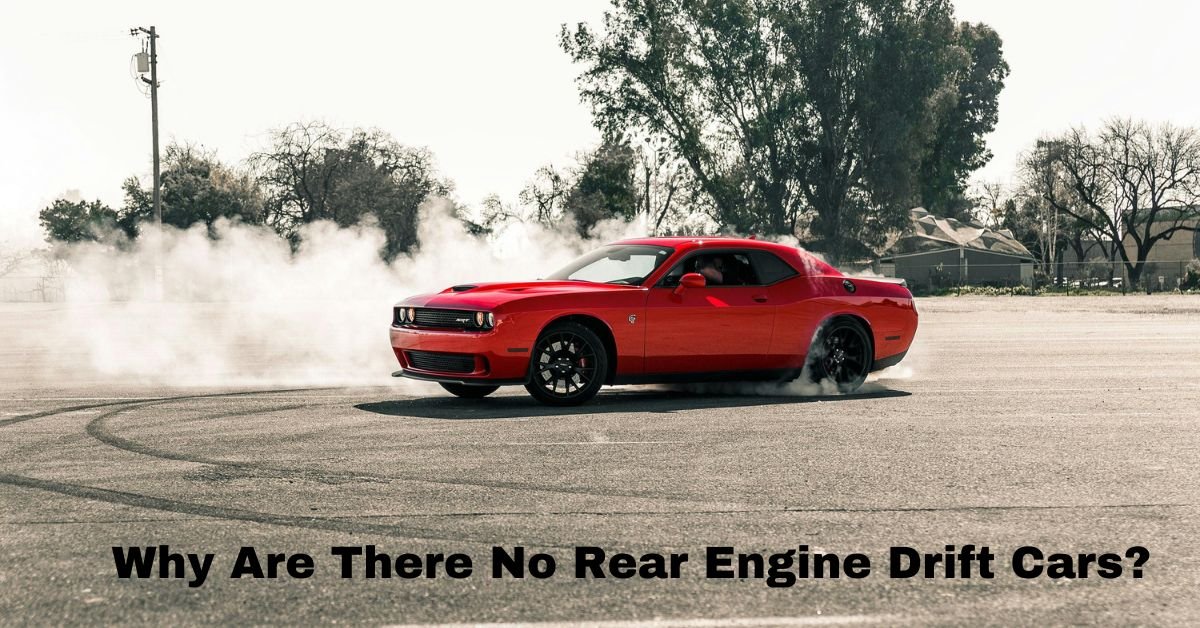When you think about drifting, images of sleek cars skidding around corners with tires screeching and smoke billowing likely come to mind. While there are a variety of cars used in drifting, one configuration is conspicuously absent from the drift scene: rear-engine cars. Despite their presence in some other motorsports and the popularity of front-engine, rear-wheel-drive (FR) cars in drifting, rear-engine (RE) drift cars are an extremely rare sight. But why is that?
Title: Why Are There No Rear Engine Drift Cars?
1. The Basics of Drifting and Car Dynamics
To understand why rear-engine drift cars are so uncommon, it’s important to first grasp the basic principles of drifting. Drifting occurs when a driver intentionally oversteers, causing the rear tires to lose traction and slide through a turn. This requires precise car control and a balance of power, weight distribution, and grip.
Most successful drift cars are front-engine, rear-wheel-drive (FR) vehicles. This layout offers a good balance between weight distribution and handling. The engine in the front helps provide grip on the rear wheels, allowing the driver to break traction and control the slide. But what happens when the engine is moved to the rear?
2. Weight Distribution and Handling Challenges
In a rear-engine car, the engine sits behind the rear axle. This creates a major change in the car’s weight distribution. With most of the car’s weight over the rear wheels, this leads to an imbalance that can make it more difficult to control the car while drifting.
A rear-engine car tends to have a very aggressive rear weight bias, meaning the rear tires will have a much higher load than the front tires. While this can potentially aid in initiating a slide, it also makes it harder to maintain control once the car is in a drift. The rear wheels are already overloaded, which can result in inconsistent behavior, such as sudden oversteering or fishtailing when the driver is trying to correct the slide.
3. Traction and Stability Issues
The rear engine is often paired with a relatively short wheelbase, especially in cars like the Porsche 911. This makes the car more sensitive to small inputs from the driver and increases the likelihood of the car becoming unstable, especially at high speeds or when transitioning between drift angles. Stability is a crucial factor in drifting, and rear-engine cars can be harder to control as the rear axle’s behavior is less predictable.
Additionally, the weight of the rear-mounted engine makes it harder to transfer weight to the front wheels when cornering. This lack of front-end grip can result in the car being difficult to “catch” in a drift or set up properly for a long, smooth slide.
Must Read: Why 10000 Mega Ohms Resistor Are Used In Car Audio?

4. The Complexities of Drivetrain Layouts
Drivetrain layout plays a big role in a car’s drifting potential. Most drift cars use a front-engine, rear-wheel-drive layout (FR) or occasionally a rear-engine, rear-wheel-drive layout (RR) in some high-performance cars. The rear-engine, rear-wheel-drive setup found in cars like the Porsche 911 is somewhat rare and doesn’t always lend itself to drifting in the same way a traditional FR layout does.
With the engine positioned at the rear, the power delivery to the rear wheels can be less responsive, which can make it more difficult for the driver to modulate the throttle and maintain the right amount of slide. On the other hand, in front-engine cars, the driver can manipulate the car’s dynamics more easily by adjusting throttle input and counter steering.
5. The Popularity of Front-Engine, Rear-Wheel-Drive Cars
Another major reason why rear-engine drift cars are rare is the sheer popularity of front-engine, rear-wheel-drive (FR) cars in the sport. These cars offer a better balance between power, weight distribution, and control. Models like the Nissan Silvia (S13/S14), Toyota Corolla AE86, and BMW M3 are iconic in the drifting community due to their predictable handling and well-balanced dynamics. The front-engine, rear-wheel-drive layout provides an ideal foundation for drifting, and it’s no surprise that the vast majority of drift cars follow this setup.
6. Conclusion: A Matter of Practicality and Control
While rear-engine cars certainly have their advantages in some motorsports—such as their unique handling characteristics and the ability to deliver power directly to the rear wheels—their design is not well-suited to the precise demands of drifting. The challenges posed by rear weight bias, unpredictable handling, and a lack of front-end grip make them less viable for the sport compared to front-engine drift cars.
So, while you might see a rear-engine car on the track now and then, it’s unlikely we’ll ever see a mainstream drift car with this setup. The combination of predictable handling, balance, and driver control makes the front-engine, rear-wheel-drive layout the clear favorite for drifting enthusiasts.
